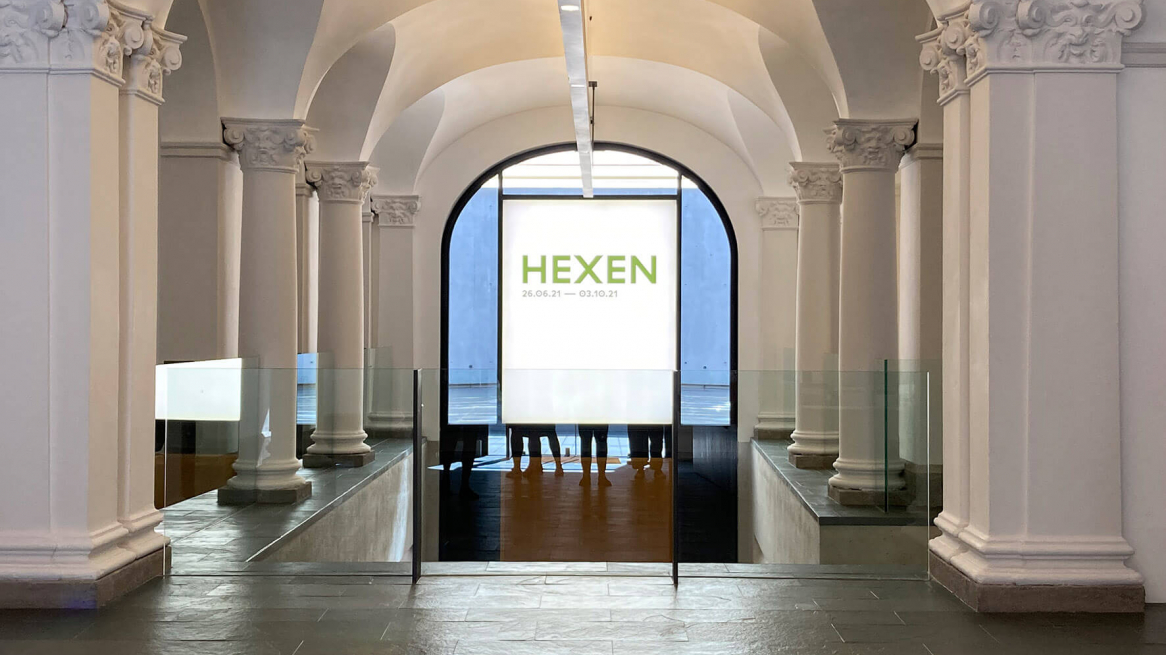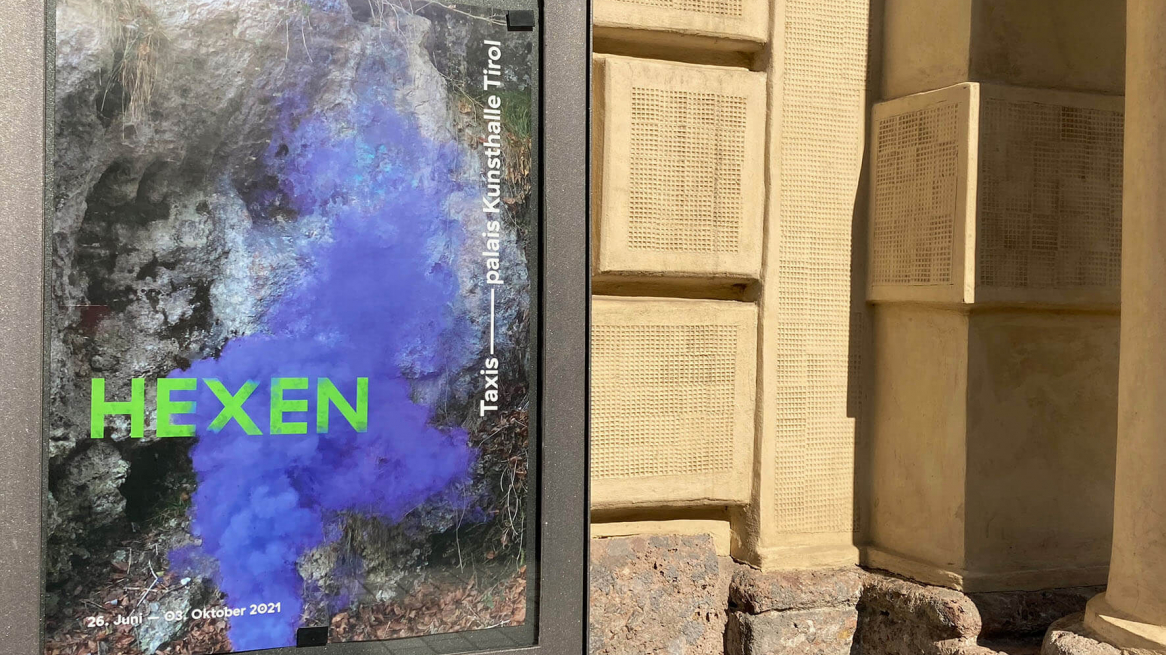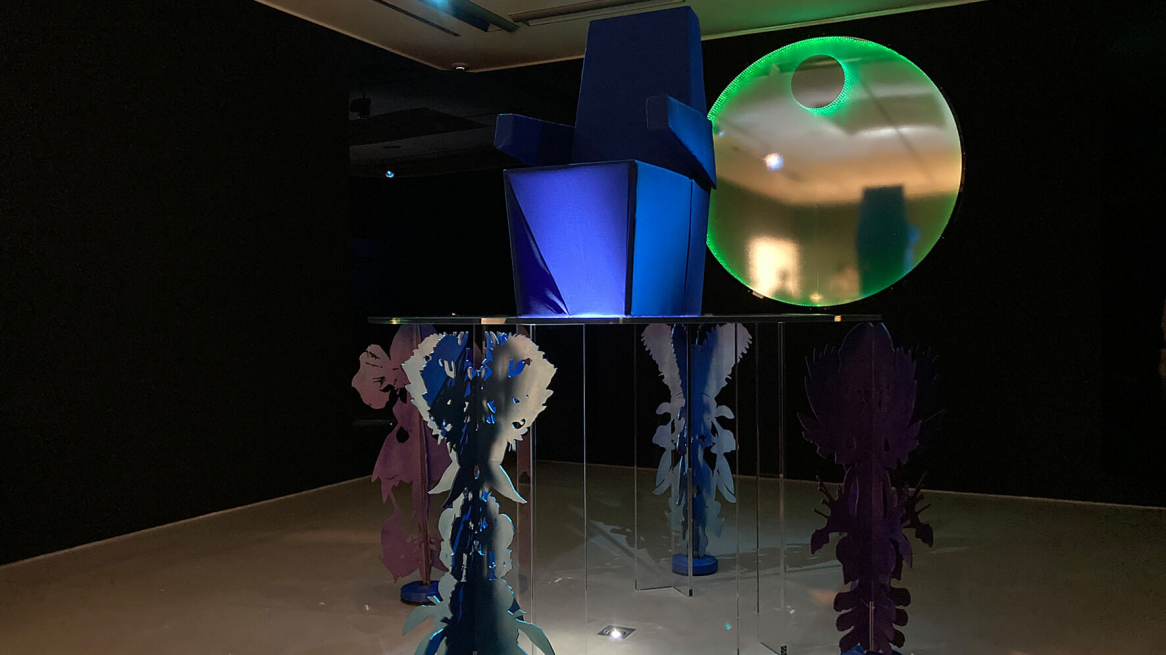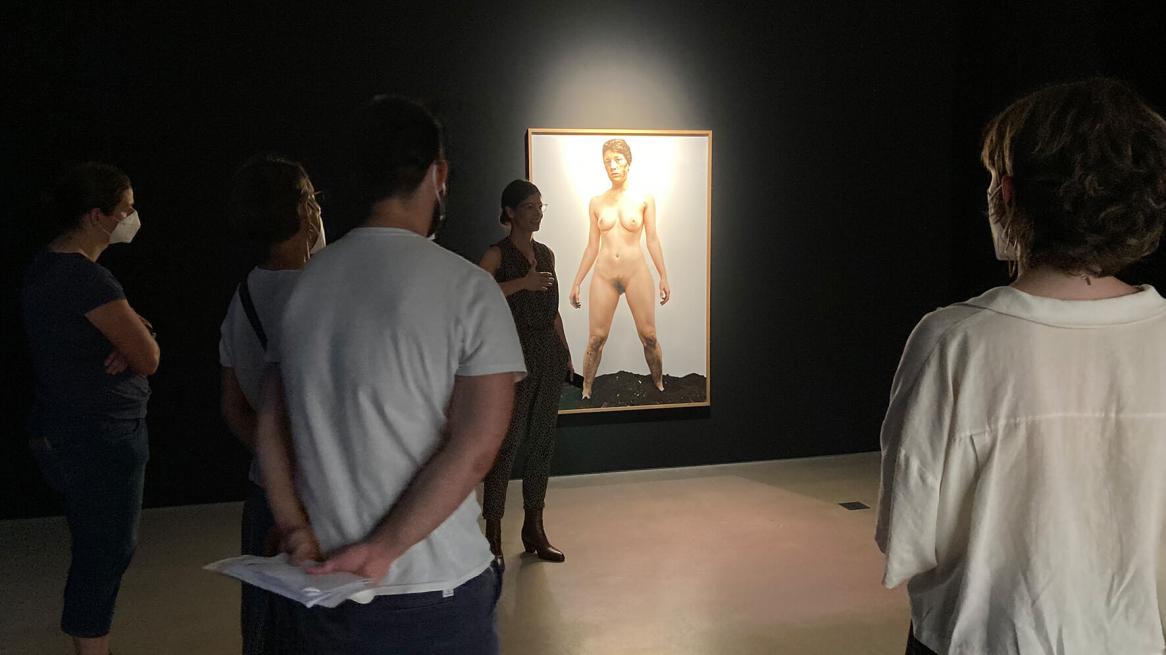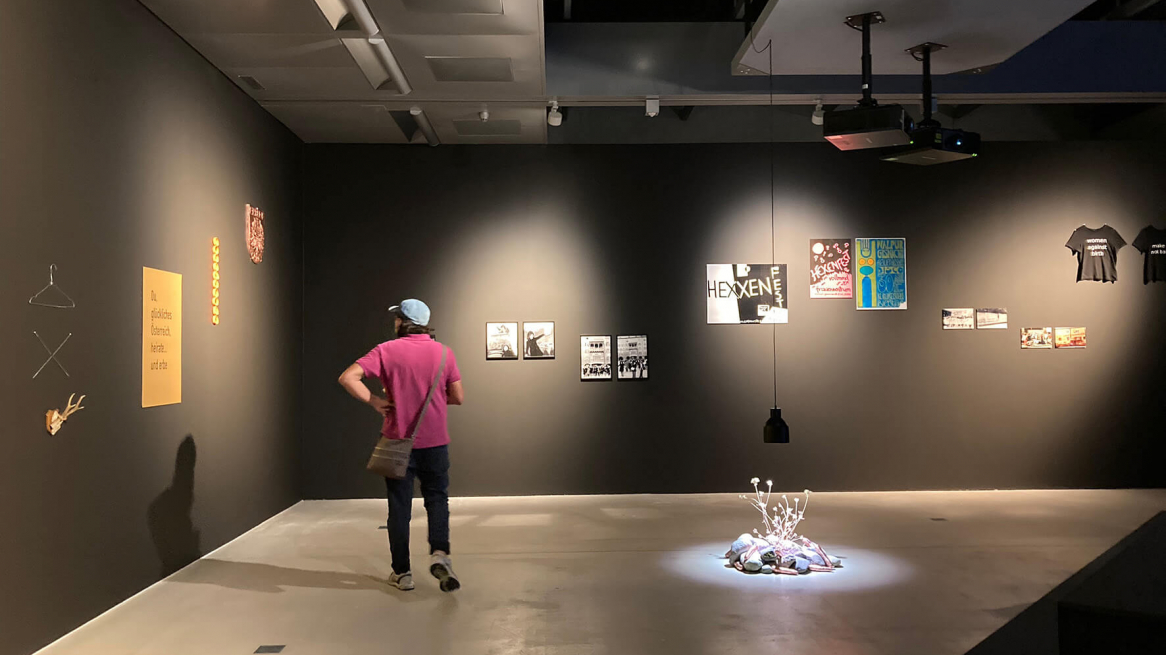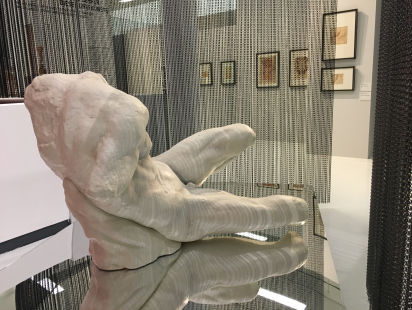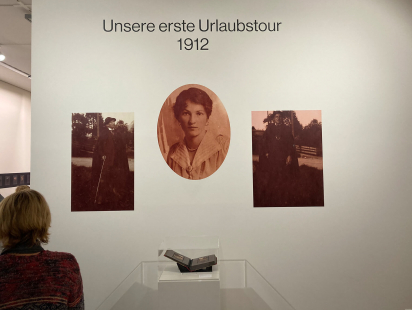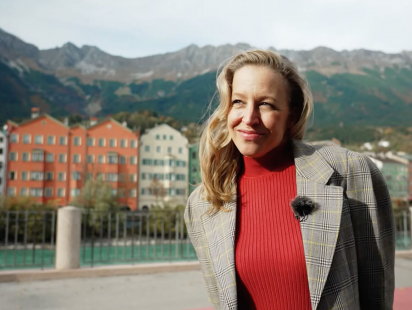Anyone standing under the Golden Roof today is reminded of the time of Maximilian, when courtly tournaments were celebrated here. For some years now, a memorial plaque has commemorated the burning of Jakob Hutter in 1536, the founder of the Anabaptist community of the Hutterites. Nothing, however, reminds us that the first witch trial in Austria took place here in 1485/86. In the exhibition "Witches" in the Taxispalais Kunsthalle Tirol, contemporary art explores the topic of witches.
„Hexen“ – Ausstellung bis 3. Oktober im Taxispalais Kunsthalle Tirol in der Innsbrucker Maria-Theresien-Straße.
DEVASTATING WORK OF ART
The Dominican monk Heinrich Kramer had accused 50 people of witchcraft. The Tyrolean people were (still) uneasy about the activities of the fanatical inquisitor. The authorities expelled him from the country even before the accused were sentenced.
As a result, Kramer wrote the "Hexenhammer" (Hammer of Witches), a guide to tracking down witches, exposing them, "questioning" them - in other words, torturing them - and sentencing them. The Hexenhammer became a bestseller. The devastating work was to cost thousands of people, especially women, their lives - also in Tyrol.
WITCHES IN THE TAXISPALAIS ART GALLERY TYROL
Standing in front of the Goldenes Dachl today, one might naturally ask: are witches still a topic in our western world? A few minutes' walk away, in the Taxis Palais Kunsthalle Tirol, the exhibition "Witches" explores this question - and finds answers.
Nina Tabassomi assembles a handful of memorable contemporary works that explore facets of this theme. "Witches don't exist. They are a social construction," says the Kunsthalle's director and curator of the exhibition. The historical persecution of witches in the 16th and 17th centuries goes hand in hand with the triumph of capitalism and is interwoven with it.
Expropriation of land, exploitation of the labour force, whose reproduction was to be ensured, accompanied the introduction and development of capitalism. In order to enforce the system, new weapons of control were needed. When it comes to witches, therefore, it is always also about the question of power and domination, it is about stigmatization, oppression and systematic violence. And with those words alone, the issue is catapulted into the present.
EZEKIEL'S DREAM
The Catholic Church played an exceedingly inglorious, because supporting, role in the persecution of witches. In the installation "Ezekiel dreams beyond repair", the Iranian-born artist Neda Saeedi deals with Ezekiel's Old Testament vision of salvation. She transfers the throne of which Ezekiel dreams to the present day. Saeedi is no longer the divine throne that symbolizes monotheism. The blue chair is one from the EU Parliament in Strasbourg.
The symbol of political power is carried by four plant replicas. Long extinct in the wild, these plants now live only at the hands of humans. That is why they no longer take root, but are stuck in the brush heads of high-pressure surface cleaners. The gloomy atmosphere surrounding this installation is intensified by a green sun in the background. On closer inspection, it turns out to be a reflection. Except for a strip of green, it disappears into a black hole.
„Opa“ (2015) ist eine der drei Arbeiten der Künstlerin Esther Strauß, die in der Ausstellung Hexen gezeigt werden.
ART THAT DEMANDS
Strong feelings are also triggered by the other works in the exhibition Witches. For example, those by Esther Strauß. The artist deals with rituals and relics, with death and the connection to our ancestors - and the possibilities of empathy and closeness beyond conventions. Thus, in the 2015 work "Grandpa," the artist stands naked in the earth she lifted from her grandfather's grave, or in "Lullabies," she cradles the skull of someone she doesn't know. The 16-minute video installation by Pauline Curnier Jardin entitled "Qu'un sang impur", which deals with female desire beyond reproduction, is also stirring.
Angela Anderson & Ana Hoffner ex-Prvulovic*, Hexenküche (the witch rarely appears in the history of the proletariat), 2021
WITCH'S KITCHEN MÜHLAUER KLAMM
The installation "Hexenküche (the witch rarely appears in the history of the proletariat)" by Angela Anderson and Ana Hoffner ex-Prvulovic* in the basement was commissioned by Taxispalais Kunsthalle Tirol. Based on quotations from The Witches' Hammer, the work explores the question of where in Tyrol "the economic and ideological infrastructures of the historical witch hunt reverberate," as Tabassomi notes.
In der Hexenkuchl in der Mühlauer Klamm trafen sich alten Überlieferungen zufolge die Hexen der Umgebung.
The short title refers to the legend of the witch's kitchen in the Mühlau Gorge above the Innsbruck district of Mühlau. The artists refer to the often poorly paid and exploited harvest workers who harvest vegetables in the fields. Using photographs and posters, they recall the first feminist demonstrations in Innsbruck and the appropriation of the figure of the witch in this context. The memories and stories of contemporary witnesses in the 42-minute video installation are also exciting.
ART WALK
All in all a moving, emotionally captivating exhibition that shows: The topic of witches is by no means ticked off. On the contrary: the history of power and powerlessness, of oppression and exploitation associated with it is red-hot.
I visited the exhibition "Witches" in the course of an Art Walkswhich leads to the Taxispalais Kunsthalle Tirol, the Kunstraum Innsbruck and the Tiroler Künstler:innenschaft. The format, launched in 2020, whets the appetite for contemporary art( I wrote about ithere ). There are more dates in autumn (see below).
Witches
Until October 3, 2021 in
Taxispalais Kunsthalle Tirol
Maria-Theresien-Straße 45
6020 Innsbruck
Opening hours exhibition and library: Tue-Sun, 11:00-18:00, Thu 11:00-20:00
Admission: 4 €/ 2 € (groups from 10 pers. 3€/pers.) , Sundays admission free, people with disabilities, children and youths up to 18 years admission free
Tel.: +43 512 505 3171
Mail: taxispalais@tirol.gv.at
www.taxispalais.art
Information about the ART Walk
Guide: Alexandra Mairhofer
Duration: 2 hours
Ticket price: 15 €/person (free admission to the exhibition halls)
Dates 2021: 24.09., 12.11., 17.12.2021
Meeting point in each case at 3:30 p.m. Tourist Information Innsbruck, Burggraben 3
Registration required by 4:00 p.m. the day before the tour at taxispalais@tirol.gv.at or Tel. +43 512 5083171
The number of participants is limited.
An overview of cultural events in Innsbruck and the surrounding area can be found at www.innsbruck.info
Photos, unless otherwise stated: © Susanne Gurschler
Rate this article
Show me the location on the map
Innsbruck has captured her heart, and the view of the Nordkette mountains soothes her soul. A journalist, non-fiction author, bookworm, amateur photographer, dog owner and mountain walker #ghostsofinnsbruck
Similar articles
It is open until April 18, 2022 at the regional museum Ferdinandeum in Innsbruck…
It was some years ago that Roland Sila, head of the Ferdinandeum library, discovered…
On December 7, a new comedy series starring Nina Proll will start on ServusTV. "Aus die Maus"…
Innsbruck couldn't have dressed up better this October. The air is bone-chillingly cold, the view of the…

